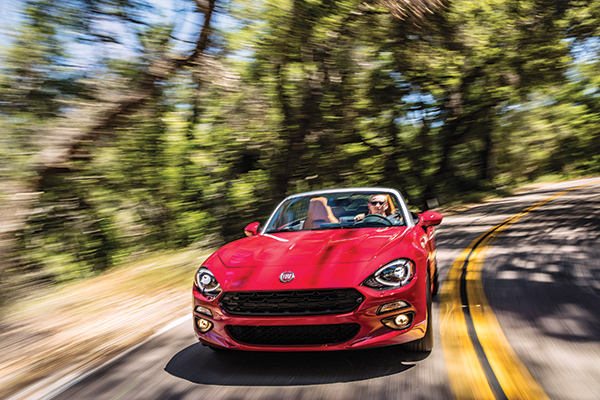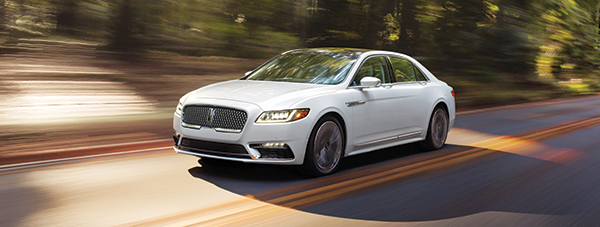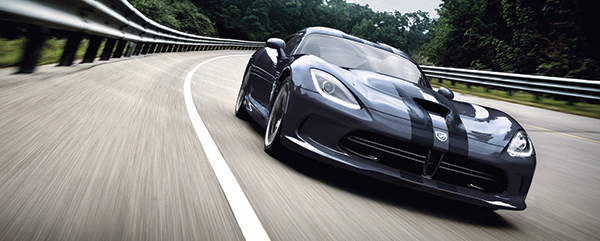
Writer: Chad Taylor
The most exciting cars of 2017 are not the high-tech self-driving models from Tesla and Mercedes. Auto enthusiasts want to drive. No, the exciting automotive news involves cars with links to the past. Whether you’re moved by sportiness or luxury, here are three models that deserve attention.
Fiat 124 Spider vs. Mazda’s MX-5 Miata
Italian automaker Fiat has long been known for small, affordable cars that don’t scrimp on the driving experience. But in its latest endeavor, the Fiat 124 Spider, Fiat is taking on one of the world’s greats: the Mazda Miata, which has been held in esteem by car lovers around the world for its balance of design and handling. The Miata is small, peppy, well-built and affordable.
After a couple of down years, Mazda has come back strong for 2017 with the MX-5 Miata, which might just be the greatest iteration of that car. So with the 124 Spider, Fiat is taking its best swing at challenging the champion. Interestingly, the 124 Spider, a front-engine, two-seat roadster, is being built on the Miata chassis at Mazda’s Hiroshima production plant.
Despite being the spiritual successor to Fiat’s classic 124 Sport Spider, which was produced from 1966 until 1985, the new 124 Spider owes more of its styling and build to both the Miata and Fiat’s own Barchetta, with the new car’s interior borrowing heavily from the former and the exterior more reminiscent of the latter.
On the outside, the 124 Spider looks amazing. At a time when building larger and beefier cars is en vogue, Fiat remains true to its roots, keeping the Spider small and light. The car features several retro design cues, which give the 124 Spider a distinctly Italian look and the feel of the Sport Spider, while maintaining the Barchetta’s modern attack lines.
Fiat has also taken steps to make the Spider more comfortable as a touring roadster than the Miata. The body is a few inches longer, allowing for a little more trunk room. The Spider’s top has more insulation for a quieter ride. And the suspension offers a smoother ride than the more aggressive Miata.
For power, the Spider relies on Fiat’s 1.4-liter turbocharged four-cylinder engine that produces 160 horses with slightly more torque than Mazda’s 155-hp mill. Fiat’s suggested retail price starts at $24,995, but with a few upgrades, spending closer to $30,000 is a more likely bet.

A New Continental
Lincoln is bringing back one of its all-time classic names. The Continental label had sat dormant for 14 years until the newest version was teased out as a concept car at the 2015 New York Auto Show. While Lincoln had churned out nine generations of Continentals between 1939 and 2002, the one that everyone remembers—the one upon which the Continental’s fame is based—is generation four. Produced between 1961 and 1969, that classic featured an aggressively low-slung profile and those iconic, rear-hinged “suicide doors.”
While generation 10 doesn’t bring back those style elements, it’s a huge step up from the Continental’s last styling. Like most new Lincolns, the 2017 Continental starts off with a re-purposed Ford body (in this case, the Taurus chassis with Fusion components), but from there the styling and features are more similar to high-end luxury vehicles, most notably the voluptuous curves and snub nose of Bentley. The modern Continental will feature a variety of trim packages, including a Lincoln-exclusive, 400-horsepower twin-turbo V-6 that comes packaged with all-wheel drive.
Lincoln is clearly looking to make the 10th generation of the Continental its flagship vehicle, as little expense is being spared in its interior styling. All trims come packaged with heated and cooled seats, adaptive cruise control, lane monitoring and safety cameras. The base model will run a little over $45,000 to start, and that number will push to just a tick over $70,000 fully loaded. It is a better-looking car than the previous generation and stands poised to be the best-performing Continental of all time. But would it have been the end of the world to have included some suicide doors?

raw power. Not that there’s anything wrong with that.
The Viper Says Goodbye
2017 will mark the end of one of the most iconic, polarizing vehicles to ever come out of an American manufacturing plant: the Dodge Viper. The Viper earned its “love it or hate it” reputation largely through its combination of sheer horsepower and its front-mid engine, rear-wheel drive configuration, which has given the vehicle a dangerously steep learning curve that has punished many inexperienced drivers.
In short, the Viper does not care if you live or die. It is here to go fast, and to that end, it comes extremely well-equipped. The ‘17 Viper (also the 25th anniversary model) boasts an astonishing 645 horsepower, coming from a massive 8.4-liter V-10 engine, mounted almost exactly at the car’s midpoint. That near perfect weight distribution, rear-wheel drivetrain and gigantic engine create an experience that is mind-bending: The Viper will go 0-60 mph in 3 seconds flat, and can be cranked up to 100 mph in about 11.5 seconds. The Viper tops out at 206 mph, and in a straight line it is one of the most impressive American vehicles on the road today.
All of that power comes with a steep cost, however, in both cash and effort. For starters, the power being generated by the rear wheels means that the car is notoriously challenging to handle. Step too hard on the gas, and the rear end will try to get away from you. Make the mistake of over-steering to correct the fishtailing, and suddenly your high-end muscle car is facing the wrong way on the highway, or flipping over onto your head. This, perhaps oddly, has long been the biggest draw of the Viper: incredible power and speed, given to you in an unbridled fashion that is unique among American cars. The Viper does not hold your hand; it pushes you out the door unsupervised and tells you not to come crying to it if you get hurt.
The base price for the 2017 Viper is just a rabbit’s hair under $90,000. But if you opt for one of the “special edition” trims (of which there are four this year), that price can balloon to $120,000 quicker than a hiccup.







